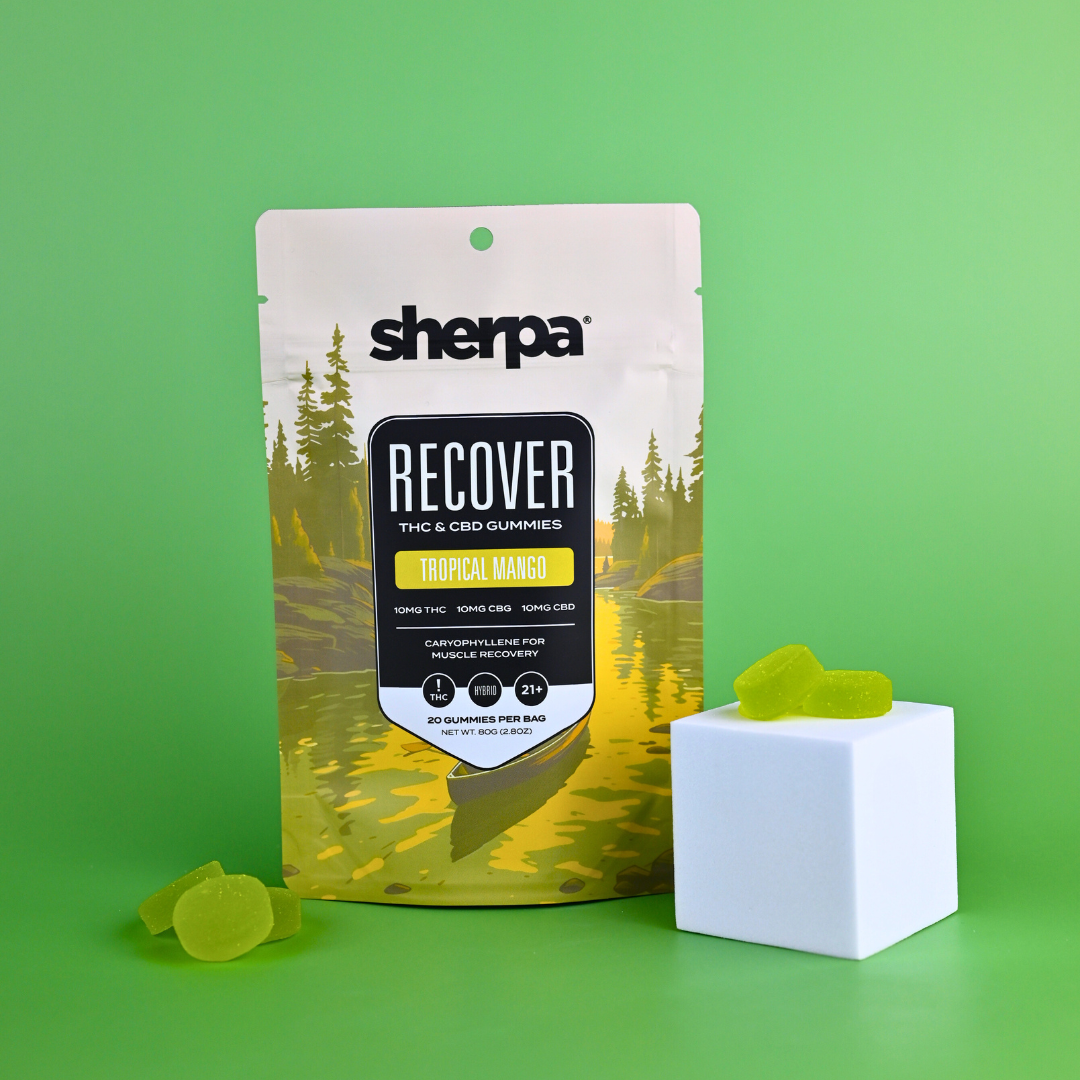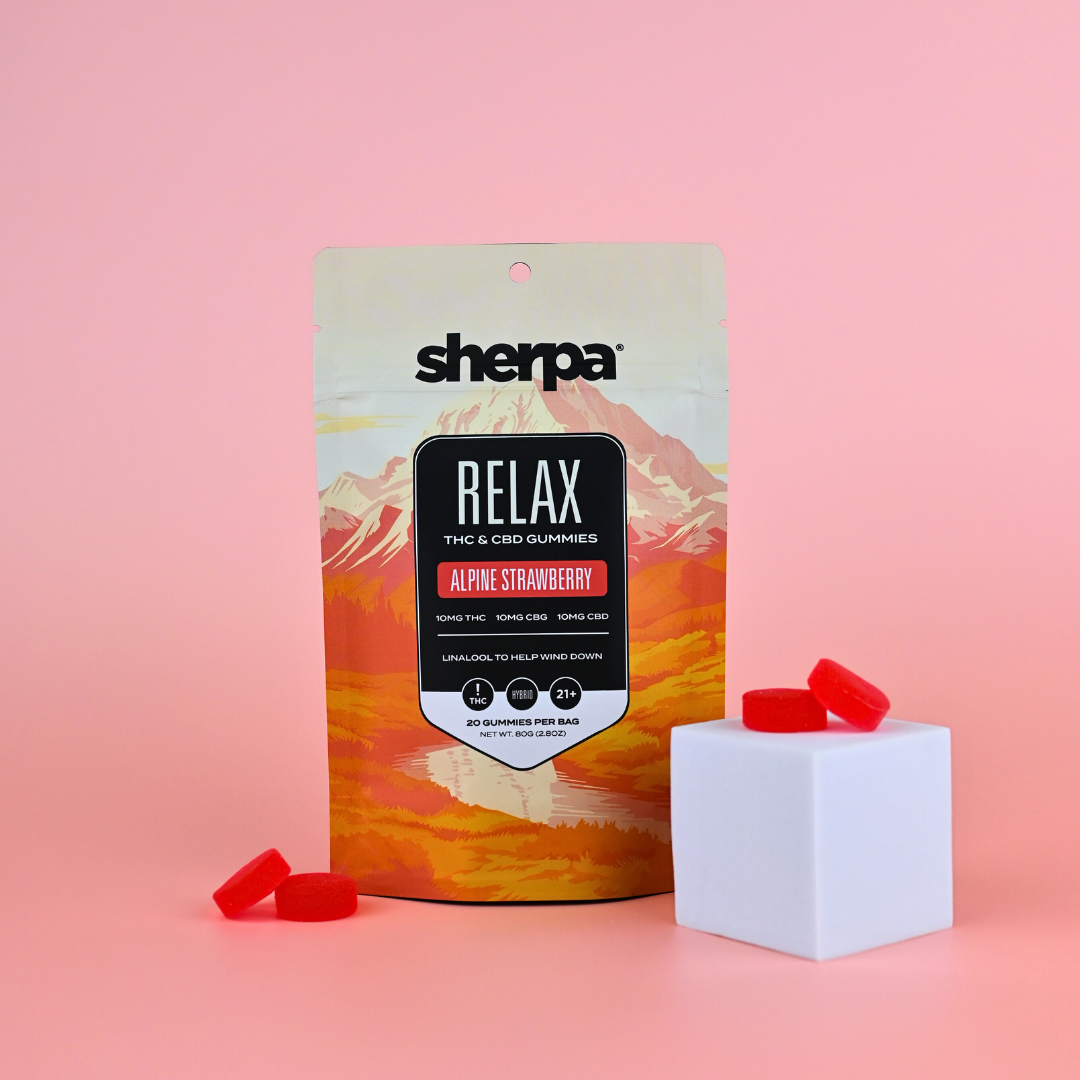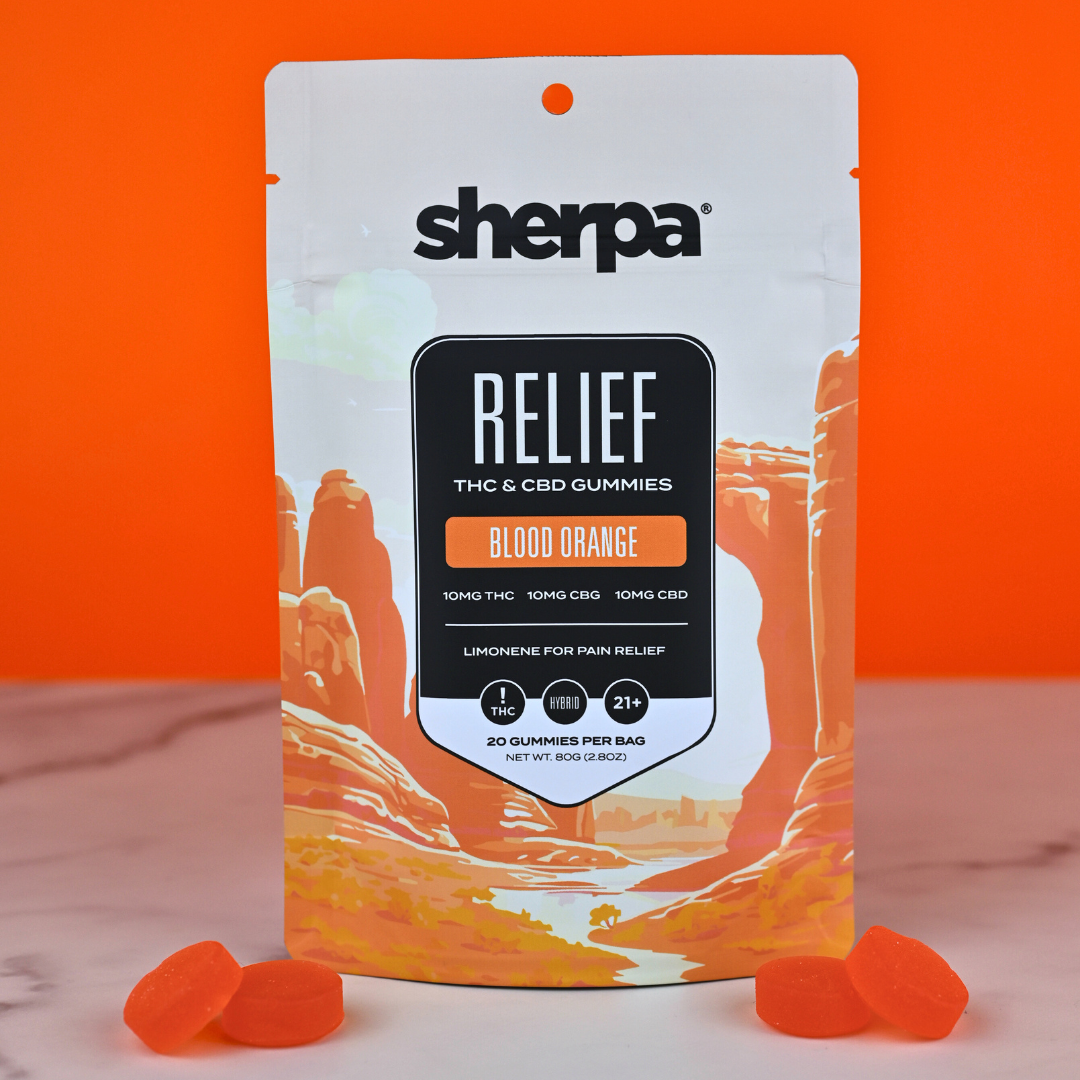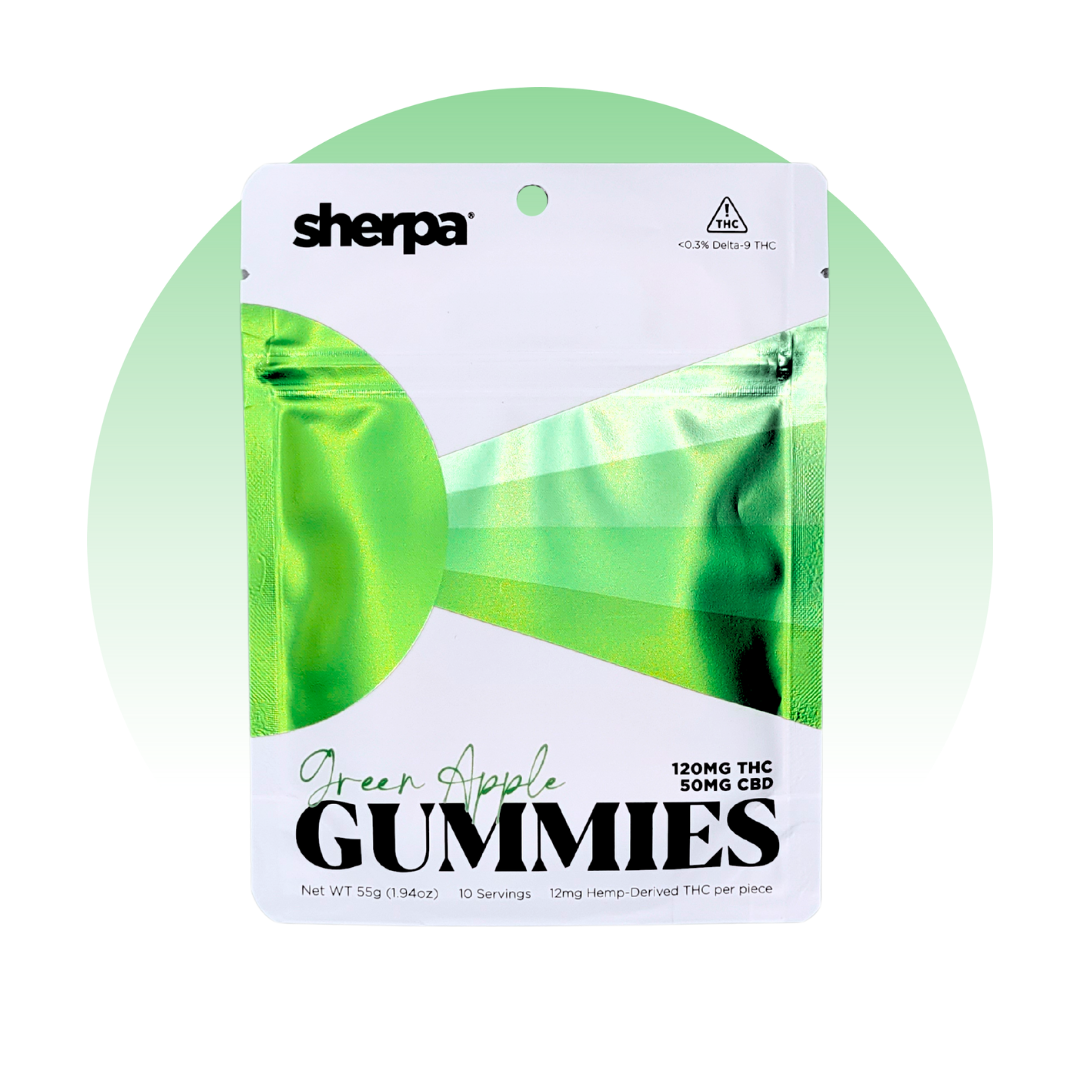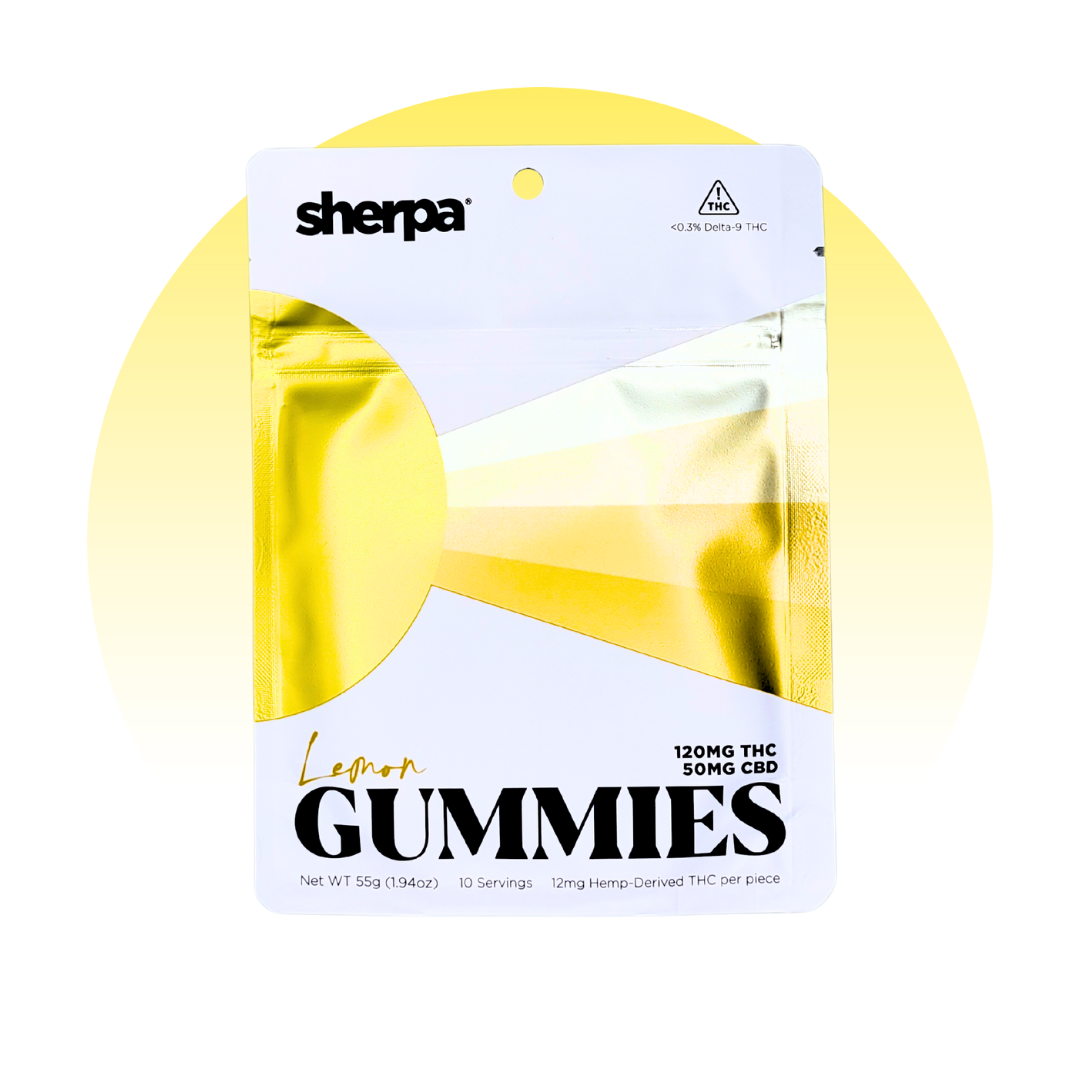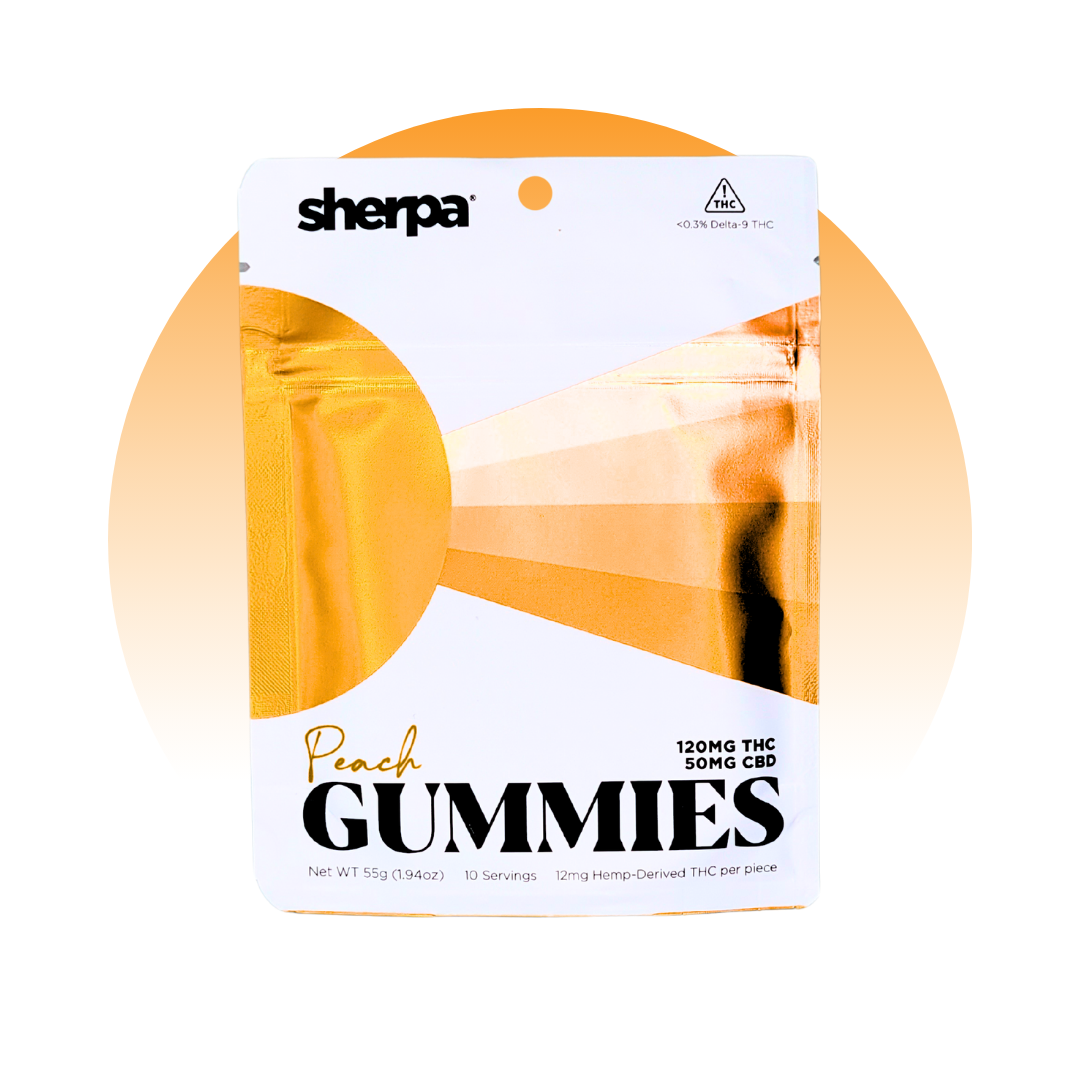-
 All
All
-
 THC Gummies
THC Gummies
-
 THC Sour Belts
THC Sour Belts
-
 THC Rice Krispie Bites
THC Rice Krispie Bites
-
 THC Candy and Sweets
THC Candy and Sweets
-
 THC Tablets
THC Tablets
-
 CBD Topicals With THC
CBD Topicals With THC
-
 CBD Pet Treats
CBD Pet Treats
-
 Sampler Pack
Sampler Pack
-
 Bundles
Bundles
THC Gummies for Pain
It's been shown that ancient peoples across the globe used cannabis as a treatment for pain. If you want to deal with the bumps and bruises from your new jiu-jitsu hobby or you've been living with chronic pain for years, edible THC can bring some serious relief.
Ready to experience what our ancestors knew? Pick up some pain-management gummies from Sherpa today.
Frequently Asked Questions
If you'll allow us to put on our history professor tweed blazer for a moment, we can learn a little about the history of cannabis. Its use actually goes a lot further back than your parents smoking it to make the music of the Grateful Dead sound better. The truth is cannabis has a long and storied history as a remedy for pain relief, dating back thousands and thousands of years across major civilizations.
Ancient China: As early as 2737 BCE, Chinese Emperor Shen Nong documented the use of cannabis in his pharmacopeia. Cannabis was prescribed for a variety of ailments, including pain relief. The plant's therapeutic properties were well recognized in traditional Chinese medicine, where it was used to treat conditions like menstrual cramps and arthritis.
Ancient Egypt: Not surprisingly, cannabis also appeared in Egyptian medicine. Ancient texts suggest that cannabis was used in topical treatments for pain and inflammation. The Egyptians valued the plant for its soothing effects and incorporated it into various medicinal practices. No word yet on if they used it to communicate with aliens for help in pyramid construction though.
Ancient Greece: Greek physicians such as Hippocrates, known as the father of modern medicine, acknowledged the benefits of cannabis for pain and inflammation. Historians have documented the use of cannabis extracts to alleviate pain from injuries and other ailments.
Modern Era: The popularity of cannabis waned with the rise of synthetic pharmaceuticals in the 20th century, and its legal status made research difficult thanks Roosevelt. The 21st century has seen a resurgence in interest, though. With the legalization of medical and recreational cannabis in many states, there has been a renewed focus on its potential to manage chronic pain and other conditions.
Today THC gummies and other cannabis products are becoming increasingly recognized for their effectiveness in managing pain, offering a natural alternative to dangerous, addictive pain medications. As the research continues, the historical use of cannabis for pain relief is being validated by modern science. Seems like our ancestors were definitely on to something.
Alright, let us take off our blazer and put on our lab goggles so we can explain how THC actually reduces pain in your body.
Tetrahydrocannabinol, the primary psychoactive compound in cannabis, can help with pain management because of the way it interacts with the body's endocannabinoid system. Here's the chemistry behind the magic:
Interaction with cannabinoid receptors: THC binds to cannabinoid receptors located throughout the nervous system and immune system. The CB1 receptors specifically — which are primarily found in the brain and central nervous system — influence how your body perceives the feeling of pain. When THC binds to these receptors, it alters pain signals and reduces the sensation.
Reduction of inflammation: In addition to reducing the severity of your pain, THC has properties that help decrease inflammation, a common cause of pain in conditions like arthritis and muscle strain. By reducing inflammation, THC helps alleviate pressure and swelling around nerves, bringing your pain down to more manageable levels.
Elevation of mood: THC's psychoactive effects can also contribute to pain relief by improving your mood and reducing your stress. Pain can often be exacerbated by emotional factors, such as anxiety and depression, which are common with chronic conditions. By enhancing your mood and helping you relax, THC can help you manage the emotional impact of your pain.
Improvement in sleep: THC can have sedative effects, promoting relaxation and improving sleep quality. Adequate rest is crucial for pain management, as it aids in the body's healing processes. If you're having trouble getting your full eight hours, edibles can help.
If you're looking specifically for pain relief, you likely aren't interested in high-dose THC gummies that are going to blast you out of the solar system. What you really need is something with mild to moderate psychoactive properties that will maximize your relief. With that in mind, let's talk about the safe use of these products.
If you're using THC gummies for pain relief, we have a few tips for safe and effective consumption. Here's how to ensure you're going to get the most out of your edibles:
Consult with a Healthcare Professional: This is probably the most important of all of our tips. If you have any pre-existing conditions or are taking other medications, consult with a healthcare provider before using THC gummies. They can provide guidance on potential interactions and help you determine an appropriate dosage.Start with a small dose: We can't stress this enough. If you're not experienced using THC for pain, you need to go slow and low. Most of our low-dose gummies come in doses ranging from two to 12 milligrams of THC per piece. With the former, you're unlikely to notice any changes in your perception, but with the latter, you likely will. If you're uncomfortable with the feeling of being "high," take things slow. Remember, you can always eat more, but you can't eat less.
Wait for the effects: Edibles take longer to produce effects compared to the consumption methods you might be more familiar with — typically anywhere from half an hour to two hours. Remember, be patient. If you find yourself thinking it's not working, set a timer on your phone for two hours. Don't eat another one until it goes off.
Monitor your dosage: It can be really helpful to keep a pain journal. Here you're going to keep track of how much THC you've consumed and how it affects you. If you think that your initial dose isn't giving you the desired effect, gradually adjust your dosage. We've found this methodical approach helps people land on the right amount for their needs without risking overconsumption.
Use in a safe environment: You always want to consume THC gummies in a familiar, comfortable setting where you can relax. That way you can manage any unexpected effects and ensure a more controlled experience. We recommend taking an edible about an hour before you go to bed, so it's starting to take effect right as you drift off to sleep.
Store properly: Make sure you keep your THC gummies out of reach of children and pets. Store them in a cool, dry place, ideally in child-proof packaging, to maintain their potency and prevent accidental ingestion by anyone they aren't meant for. Although cannabis gummies aren't dangerous, consuming one unexpectedly and dealing with the effects can be unpleasant.
Choosing the right THC gummies involves more than just picking a product off the shelf. To ensure you get the best quality and experience, consider the following tips when shopping for pain-management THC gummies:
Check the THC dosage: Pay really close attention to the THC content per gummy. Dosages can vary widely, usually ranging anywhere from 2 to 25 milligrams of THC per piece — sometimes a lot more. If you're new to THC or have a lower tolerance, start with gummies that have a lower dosage to gauge your response before moving to higher doses.Look for lab testing and certificates of analysis: Reputable brands will provide lab testing results or certificates of analysis that confirm the potency and purity of their products. At Sherpa, we test and retest our products to verify that the THC content is accurate and ensure our gummies are free from contaminants like pesticides or heavy metals.
Read ingredients and nutrition labels: In the same vein, review the ingredient list to ensure the gummies are made with high-quality, natural ingredients. If you're taking gummies to manage your pain, you're probably going to want to avoid products with excessive artificial additives, high levels of sugar, or other ingredients that may affect your health.
Consider the product's formulation: Some of our gummies are made with additional ingredients like melatonin, CBD, or cannabis terpenes to dial in their effects. Consider what additional benefits you might want, such as better sleep or reduced inflammation, and choose one of our products that aligns with your needs.
Consult with a Professional: We said it before, but it's important enough to repeat — if you're unsure about which product to choose or have specific health concerns, consult with a healthcare professional or a knowledgeable cannabis specialist. They can provide personalized recommendations based on your needs and preferences. If you don't know where to start, reach out to us for help.
Ready for some recommendations? Our favorite gummy for managing pain is, unsurprisingly, our Relief gummy. It's infused with CBD and a low dose of THC, so you'll get all of the benefits without any of the more challenging effects of a higher-dose alternative. They're also great for microdosing – just cut the gummy in half or into quarters to feel the benefits in the background.
If you're looking for something with a more pronounced effect, you might consider taking our 12 mg gummies. Crafted in a variety of different flavors, these gummies are our middle-of-the-road option. Perfect for microdosing and knocking the pain out of the park with the full dose, these gummies are our workhorses.
Finally, we have our Recover gummy. Formulated with the right blend of CBD and THC, these gummies help your body bounce back quickly so you can return to your adventures. Take one after a long run or a particularly hard workout and you'll notice the difference in the morning.
